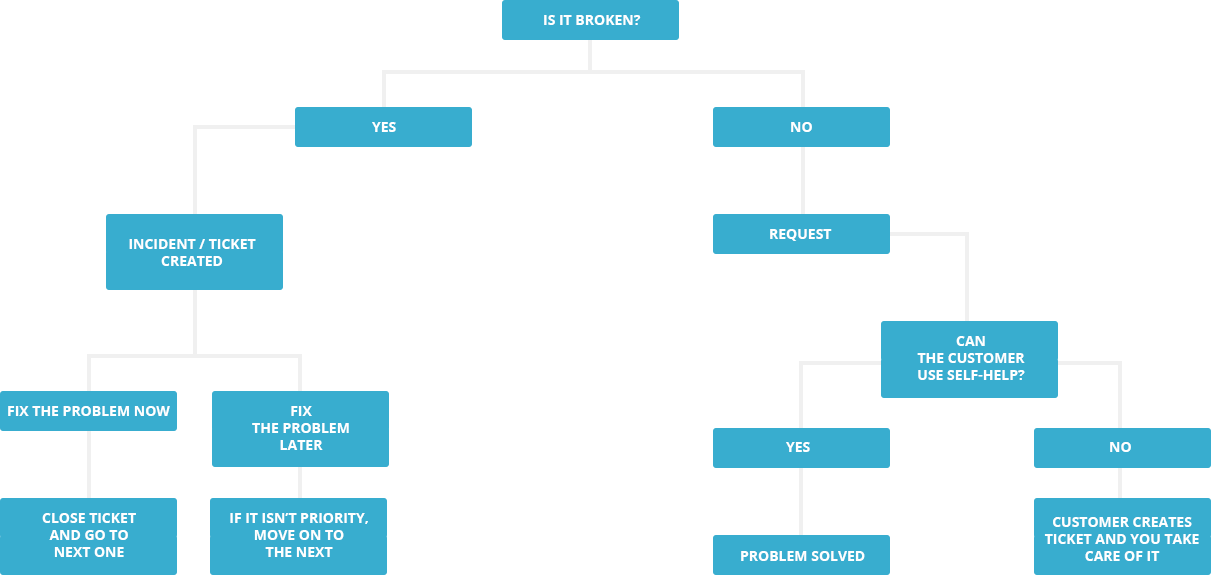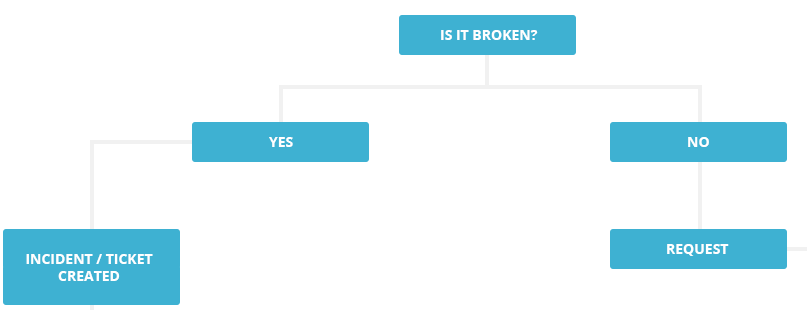 The first step is to determine whether or not the device is broken. If it isn't, it's considered a request and usually, customers can figure it out themselves with self-help options, such as the FAQ database. If so, you don't even have to do anything.
If not, the team will create a ticket, which is added to the queue and someone will handle it when they have time.
The first step is to determine whether or not the device is broken. If it isn't, it's considered a request and usually, customers can figure it out themselves with self-help options, such as the FAQ database. If so, you don't even have to do anything.
If not, the team will create a ticket, which is added to the queue and someone will handle it when they have time.
 If it is broken, it is an incident and a ticket is created by the customer technician. If the technician can fix the problem right then or can start working on it, they will do so and close the ticket.
If it isn't considered a priority, the team will wait and move to the higher-priority tickets first and then fix the problem.
If it is broken, it is an incident and a ticket is created by the customer technician. If the technician can fix the problem right then or can start working on it, they will do so and close the ticket.
If it isn't considered a priority, the team will wait and move to the higher-priority tickets first and then fix the problem.


The first step is to determine whether or not the device is broken. If it isn't, it's considered a request and usually, customers can figure it out themselves with self-help options, such as the FAQ database. If so, you don't even have to do anything.
If not, the team will create a ticket, which is added to the queue and someone will handle it when they have time.

If it is broken, it is an incident and a ticket is created by the customer technician. If the technician can fix the problem right then or can start working on it, they will do so and close the ticket.
If it isn't considered a priority, the team will wait and move to the higher-priority tickets first and then fix the problem.

No comments:
Post a Comment